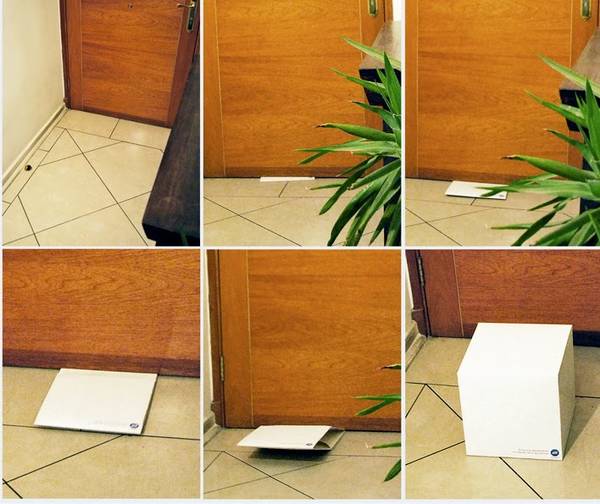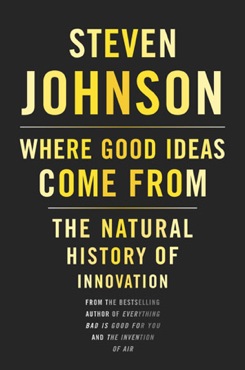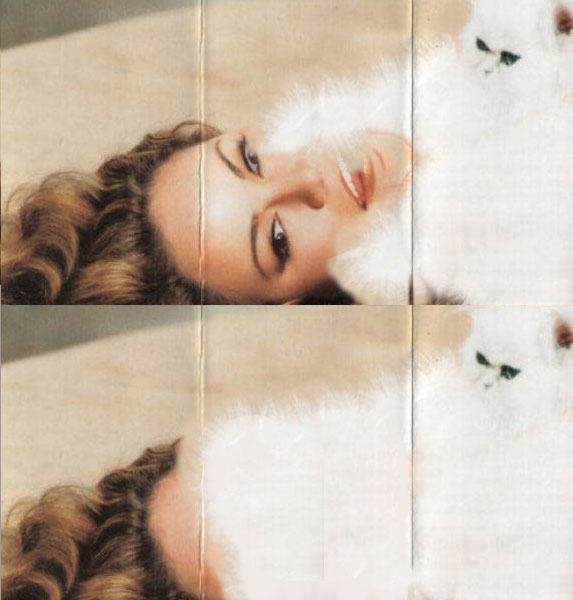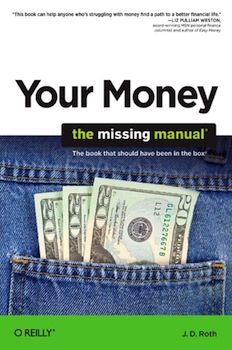The Latest from Boing Boing |  |
- Why the copyright wars matter: a reply to Helienne Lindvall
- 3D printed cartoon birds are part Bruegel, part Tex Avery
- Pro-science rally in London this Saturday
- Leather steampunk fetish-masks in Vogue
- William Gibson nails my philosophy in life
- Lip-synching students bring joy to crusty old blogger's heart
- Animations made from found images
- Security company ad tricks people into thinking their houses were burgled
- Portable lighthouse keeper libraries of yesteryear
- Firefighters watch as house burns to the ground: owner had not paid annual firefighting fees
- Nembutal, for a well-behaved child
- A look inside NYC's James A. Farley Post Office
- Soviet ad celebrating petty bourgeois resurgence
- Sky Marshals to lose their cushy first-class seats?
- How to Speak Zombie: A Guide for the Living
- What's the worst thing about The Social Network? (Hint: it ain't Zuckerberg)
- Photos of futuristic house in Woody Allen's Sleeper
- Man faces $30,000 in fines for growing too many vegetables in his yard
- Kevin Kelly and Steven Johnson in conversation
- Mariah Carey vs. Saudi Photoshop Censors: Boing Boing's exclusive out-take discovery
- Mariachi Mona Lisa
- Under Pressure, performed by homeless man with double Kermits
- Mechanically separated chicken paste looks like strawberry soft serve
- Your Money: The Missing Manual
- Charlene Yi responds to pointless TMZ attack
- "CIA Secret Experiments" on National Geographic Channel
- A new video interpretation of Aphex Twin's "Gwely Mernans"
- Ultra high resolution photos of famous paintings
- Mariah Carey meets Photoshopping Saudi censors
- Google TV launches new website, announces content partners
| Why the copyright wars matter: a reply to Helienne Lindvall Posted: 05 Oct 2010 04:23 AM PDT In this week's Guardian column, "The real cost of free," I reply to last week's broadside by my fellow Guardian columnist Helienne Lindvall, who accused me of charging enormous fees to encourage creators to give their works away. After correcting the record on fees (most of my talks are free, a small number are paid for, and a tiny fraction of those are paid for at large amounts), I go to the meat of the issue: what is it that I tell people when they ask me to speak at their events? But I don't care if you want to attempt to stop people from copying your work over the internet, or if you plan on building a business around this idea. I mean, it sounds daft to me, but I've been surprised before.The real cost of free |
| 3D printed cartoon birds are part Bruegel, part Tex Avery Posted: 05 Oct 2010 04:02 AM PDT  Shapeways community member Chris Bense is selling 3D printed "Toonbirds" -- cartoonish birds whose heads have been replaced with multi-part, kinetic whimsical objects, like scissors, clothespegs or telescoping spyglasses, looking like a Bruegel/Tex Avery crossbreed. Chris Bense (via Shapeways Blog) |
| Pro-science rally in London this Saturday Posted: 05 Oct 2010 03:26 AM PDT Londoners! This Saturday, 2,000+ scientists and lovers of science will rally in Westminster to tell the nation that "Science is Vital" and to protest cuts to science programmes in the new budget. Bring placards, lab coats, and scientific instruments. I'm going to try to bring my kid, who is the most sciencey thing in the house, a living applied developmental neuroscience experiment that I've been working on for about 31 months now.
Science is Vital » Attend the rally (via @larasee!) |
| Leather steampunk fetish-masks in Vogue Posted: 05 Oct 2010 03:18 AM PDT  The new Vogue Hommes International features a photo-series of models decked out in steampunk fetish masks from gifted Ukrainian steampunk leather-worker Bob Basset -- go Bob! |
| William Gibson nails my philosophy in life Posted: 04 Oct 2010 11:54 PM PDT "My problem is that all things are increasingly interesting to me" - William Gibson, at last night's Intelligence Squared event in London. |
| Lip-synching students bring joy to crusty old blogger's heart Posted: 04 Oct 2010 11:53 PM PDT Students at Axe Sud in Toulouse, France, made this stellar, elaborately choreographed lip-synch video to a medley of "Happy Together" and "Paper Planes." Be sure you watch at least to the "Baa baa" part -- that's where my heart grew three sizes, like the Grinch's, and I acquired a sloppy, happy grin. Lip Dub Axe Sud Toulouse 2010 (via Beyond the Beyond) |
| Animations made from found images Posted: 04 Oct 2010 11:49 PM PDT Cassandra C. Jones makes collage animations and photos by assembling found images into new ones, like this tribute to Muybridge's horses, made from stock photos strung together in clever sequence. Snap Motion Re-Animation (via Kottke) |
| Security company ad tricks people into thinking their houses were burgled Posted: 05 Oct 2010 03:44 AM PDT  The Chilean division of security company ADT created an under-door advertisement intended to trick people into thinking that someone had broken into their houses. The ad was a spring-loaded, collapsible box that could be slid under the door, whereupon it popped up, giving the impression that it had been placed there by someone who had slipped the lock. Copyranter reports, "On the box was the ADT logo and the line: 'Breaking into your apartment is easier than you think.'"
ADT shows how easy it is to break into your home by (fake) breaking into your home.
|
| Portable lighthouse keeper libraries of yesteryear Posted: 04 Oct 2010 11:39 PM PDT  Here's a beautiful display of the portable libraries that were once supplied to Michigan's lighthouse keepers; click through for a partial bibliography of titles, including "MY APINGI KINGDOM: WITH LIFE IN THE GREAT SAHARA, AND SKETCHES OF THE CHASE OF THE OSTRICH, HYENA." In 1876 portable libraries were first introduced in the Light-House Establishment and furnished to all light vessels and inaccessible offshore light stations with a selection of reading materials. These libraries were contained in a portable wooden case, each with a printed listing of the contents posted inside the door. Proper arrangements were made for the exchange of these libraries at intervals, and for revision of the contents as books became obsolete in accordance with suggestions obtained from public library authorities.USLHE Traveling Library (via Neatorama) |
| Firefighters watch as house burns to the ground: owner had not paid annual firefighting fees Posted: 04 Oct 2010 11:35 PM PDT Homeowners in the region outside the town limits of South Fulton, TN, have to pay $75 to come under the protection of the town's firefighters. Late in September, the house of Gene Cranick, who had not paid his $75 for the year, caught fire. When the fire department arrived, they announced that since Cranick had not paid his fees, his house would be allowed to burn to the ground. Cranick offered to pay the $75, but the firefighters weren't having any of it. They eventually acted to put out the fire when it spread to the home of a neighbor who had previously paid. As the mayor said, " if homeowners don't pay, they're out of luck." The Cranicks told 9-1-1 they would pay firefighters, whatever the cost, to stop the fire before it spread to their house.Firefighters watch as home burns to the ground (via JWZ!)
|
| Nembutal, for a well-behaved child Posted: 04 Oct 2010 11:29 PM PDT  This Nembutal ad's depiction of a sedated, well-behaved child is refreshingly honest, in a glassy-eyed, Midwich Cuckoos sort of way. |
| A look inside NYC's James A. Farley Post Office Posted: 04 Oct 2010 11:26 PM PDT  Here's a rare look at the interiors of New York's old, magnificent James A. Farley Post Office at 33rd Street & 8th Ave. It's about to be gutted to turn into part of Penn Station, so much of it is empty, but there are hints, here and there, of its former grandeur. This floor was once home to the Postal Police! Though you'd never expect them to need it, this area used to be a jail cell for the Postal Police's use. You can still see marks from the bars in the floor. We continued into the old Postal Police offices... This was the main hallway for the police wing. One of the neat things about the offices in this wing is that they're all connected! Literally, a path through all 10 or 12 offices:OHNY: Exploring The (Nearly!) Empty Post Office Building On 8th Ave (Thanks, Aaronprimer, via Submitterator!) |
| Soviet ad celebrating petty bourgeois resurgence Posted: 04 Oct 2010 10:39 PM PDT  According to Farranger, a LiveJournal commenter, this 1925 Soviet advertisement "is an ad indicative of the goods available to citizens in the wake of Lenin's New Economic Policy, which allowed small shops to reopen and for petty commerce." Also (and it must be said): that young man appears to be consummating unnatural relations with the Flatiron building. |
| Sky Marshals to lose their cushy first-class seats? Posted: 04 Oct 2010 11:09 PM PDT Sky Marshals like to fly first class -- that's where the cockpit is, after all. Airlines hate it when Sky Marshals fly first: they have to give them the seat, even if it means bumping some loyal customer who's paid thousands for her ticket back to coach -- and the airlines aren't allowed to tell the bump-ee why she's not getting a warm dish of pecans and a linen napkin for her gin and tonic. Marshals object to this plan on the grounds that "It's based on threat and tactical doctrines." Of course, the leg-room is nice, too. Airlines Want to Bump Air Marshals to Coach (via Schneier) (Image: Thai First Class Seat (1A), a Creative Commons Attribution (2.0) image from richardmoross's photostream)
|
| How to Speak Zombie: A Guide for the Living Posted: 04 Oct 2010 07:18 PM PDT  I heard some really creepy sounds coming from my office closet yesterday. It sounded like a zombie was in there. I opened the door and found my 7-year-old daughter with a copy of How to Speak Zombie: A Guide for the Living. I heard some really creepy sounds coming from my office closet yesterday. It sounded like a zombie was in there. I opened the door and found my 7-year-old daughter with a copy of How to Speak Zombie: A Guide for the Living. Written by Steve Mockus, my friend and editor at Chronicle Books, the book has battery-powered sound module with ten different zombie phrases to help you learn how to speak the language of the undead who walk among us. (Judging from the phrases on the sound module, a talking zombie sounds a like an angry Scooby Doo on quaaludes.) Travis Millard's comically gruesome illustrations and Steve's funny writing have earned this book a top spot in our house. |
| What's the worst thing about The Social Network? (Hint: it ain't Zuckerberg) Posted: 04 Oct 2010 07:00 PM PDT  The Social Network, aka The Facebook Movie, fails the Bechdel test. Rebecca Davis O'Brien writes about the film's "female props" in The Daily Beast: Women in the movie (...) are less prizes than they are props, buxom extras literally bussed in to fill the roles of doting groupies, vengeful sluts, or dumpy, feminist killjoys. They are foils for the male characters, who in turn are cruel or indifferent to them. Because if there's one place where women can get even less of a fair shake than in Silicon Valley, it's... Hollywood. (via Esther Dyson) |
| Photos of futuristic house in Woody Allen's Sleeper Posted: 04 Oct 2010 05:15 PM PDT  My friend Patrick Young visited the famous "Sleeper" house near Golden, Colorado. He took a bunch of photos of the exterior and interior. I lived in Golden for a couple of years when I was young and I was always intrigued when we drove by it on I-70. I had always driven by The Sculpted House (aka The Sleeper House, Flying Saucer House) on the way to skiing. Today, I had the opportunity to actually see the house made famous by Woody Allen's 1973 sci-fi comedy Sleeper. The house was designed & built on Genessee Mountain by Architect Charles Deaton. The interior of the Sculptured House went largely unfinished for almost three decades until the entrepreneur John Huggins purchased the house and in 2003 completed the interior and added a large addition. The addition had been designed by Charles Deaton with Nick Antonopolous before Deaton's death in 1996. Deaton's daughter, Charlee Deaton, was commissioned to design the interior. The house recently sold to its current owner for over $5.5 million.Sleeper House |
| Man faces $30,000 in fines for growing too many vegetables in his yard Posted: 04 Oct 2010 01:58 PM PDT Ted Balaker of Reason.TV pointed me to this 80-second video about a Georgia man who "faces up to $30,000 in fines and legal fees for the 'crime' of planting too many organic vegetables in his garden." Busted for Growing Veggies! Reason.tv's Nanny of the Month for September 2010 |
| Kevin Kelly and Steven Johnson in conversation Posted: 04 Oct 2010 01:41 PM PDT   Steven Johnson and Kevin Kelly both have provocative new books out. Steven's is Where Good Ideas Come From: The Natural History of Innovation while Kevin's is titled "What Technology Wants." Wired sat them both down for a conversation. The way these two think, talk, and riff, I'm glad I wasn't the one responsible for editing that chat down into a couple of pages of readable text. From Wired: In Where Good Ideas Come From: The Natural History of Innovation, Johnson draws on seven centuries of scientific and technological progress, from Gutenberg to GPS, to show what sorts of environments nurture ingenuity. He finds that great creative milieus, whether MIT or Los Alamos, New York City or the World Wide Web, are like coral reefs—teeming, diverse colonies of creators who interact with and influence one another.Kevin Kelly and Steven Johnson on Where Ideas Come From (Wired) Where Good Ideas Come From: The Natural History of Innovation by Steven Johnson (Amazon) "What Technology Wants by Kevin Kelly (Amazon) |
| Mariah Carey vs. Saudi Photoshop Censors: Boing Boing's exclusive out-take discovery Posted: 04 Oct 2010 05:53 PM PDT  Rob found these additional out-takes from the de-haram-ized Mariah Carey Saudi Arabia album cover collection. This is what happens when censorkitty takes over. Good sleuthing, Rob. |
| Posted: 04 Oct 2010 12:15 PM PDT  Stencil art by Nick Walker, found and photographed by my friend Clayton Cubitt "behind a driveway/alley rolldown gate in Brooklyn." |
| Under Pressure, performed by homeless man with double Kermits Posted: 04 Oct 2010 01:07 PM PDT Video Link. I should add that this fellow is presumably performing the role of a homeless man with two children to raise, but the message, poignancy, and timeliness is all the same. (thanks, Richard Metzger). |
| Mechanically separated chicken paste looks like strawberry soft serve Posted: 04 Oct 2010 12:40 PM PDT  Visual treat of the day: mechanically-seperated chicken paste. Someone figured out in the 1960's that meat processors can eek out a few more percent of profit from chickens, turkeys, pigs, and cows by scraping the bones 100% clean of meat. This is done by machines, not humans, by passing bones leftover after the initial cutting through a high pressure sieve. The paste you see in the picture above is the result.Mechanically separated chicken paste looks like strawberry soft serve |
| Your Money: The Missing Manual Posted: 04 Oct 2010 12:27 PM PDT  This is the best user-guide to personal finance I've found, and I've probably read them all. It is certainly the sanest and most level-headed. There are no get rich quick schemes here, just plenty of ways to get rich slowly. Indeed, Get Rich Slowly was the name of author's very popular personal finance blog, which led to this book. J.D. Roth takes the great investing advice of Andrew Tobias in The Only Investment Guide You'll Ever Need, and he summarizes the life-earning wisdom in the previously reviewed (and still recommended) book Five Rituals of Wealth and he includes the needed crystalization of priorities found in Your Money or Your Life, and financial motivations from Suze Orman and the Millionaire Next Door and then adds key insights and tips from hundreds of other lesser-known money gurus. Basically, Roth has read every book and blog on money managing, investing, saving, and earning and digests and integrates all this hard-won knowledge into an amazing selection of smart, practical ideas for today. I could hardly turn a page without learning a solid investing tip or two, or a clever way to save a few hundred dollars, or an example of something I already knew, but was looking for a vivid way to teach my kids. I like the fact that Roth emphasizes the value of sharing whatever wealth you have, and keeps returning to the long view. I would not call this an inspirational book (plenty of those on the shelves), nor even a memorable book like the ones mentioned above. Rather it is what is advertised: a day-to-day operating manual for your money. Specific details, sources, methods, tricks. Dip into it when you are stuck, check it before trying something new, re-read it when you think you know it all. I've done pretty well financially, and if you were to ask me my practical advice -- like what to do tomorrow -- I would simply give you this book. It's slow, but true. "Your Money: The Missing Manual," by J.D. Roth (2010, 336 pages) $15 from Amazon. Read excerpts and comment on this at Cool Tools. Submit a tool. This is the best user-guide to personal finance I've found, and I've probably read them all. It is certainly the sanest and most level-headed. There are no get rich quick schemes here, just plenty of ways to get rich slowly. Indeed, Get Rich Slowly was the name of author's very popular personal finance blog, which led to this book. J.D. Roth takes the great investing advice of Andrew Tobias in The Only Investment Guide You'll Ever Need, and he summarizes the life-earning wisdom in the previously reviewed (and still recommended) book Five Rituals of Wealth and he includes the needed crystalization of priorities found in Your Money or Your Life, and financial motivations from Suze Orman and the Millionaire Next Door and then adds key insights and tips from hundreds of other lesser-known money gurus. Basically, Roth has read every book and blog on money managing, investing, saving, and earning and digests and integrates all this hard-won knowledge into an amazing selection of smart, practical ideas for today. I could hardly turn a page without learning a solid investing tip or two, or a clever way to save a few hundred dollars, or an example of something I already knew, but was looking for a vivid way to teach my kids. I like the fact that Roth emphasizes the value of sharing whatever wealth you have, and keeps returning to the long view. I would not call this an inspirational book (plenty of those on the shelves), nor even a memorable book like the ones mentioned above. Rather it is what is advertised: a day-to-day operating manual for your money. Specific details, sources, methods, tricks. Dip into it when you are stuck, check it before trying something new, re-read it when you think you know it all. I've done pretty well financially, and if you were to ask me my practical advice -- like what to do tomorrow -- I would simply give you this book. It's slow, but true. "Your Money: The Missing Manual," by J.D. Roth (2010, 336 pages) $15 from Amazon. Read excerpts and comment on this at Cool Tools. Submit a tool. |
| Charlene Yi responds to pointless TMZ attack Posted: 04 Oct 2010 01:43 PM PDT This may not come as a surprise to most people, but TMZ sure sucks. They tried their best with dirty editing tricks to make actress and filmmaker Charlene Yi look bad for raising money for Oxfam. The question is, why would TMZ bother doing something like this when there are plenty of genuine assholes to make fun of, if that's their pathetic goal in life? (Via The Daily Wh.at) |
| "CIA Secret Experiments" on National Geographic Channel Posted: 04 Oct 2010 11:29 AM PDT  Tonight, National Geographic Channel is airing a special program titled "CIA Secret Experiments," about the organization's secret research on mind control, germ warfare, and other questionable methods that they thought could give the US an upper hand in the Cold War. The video teaser on the site is a bit cheesy with the re-enactments, but I expect there will be some good info in the show. From National Geographic Channel: • In the wake of World War II, the U.S. government was engaged in a large number of confidential medical experiments designed to help win the Cold War. During these elicit experiments they exposed unknowing members of the public to biological and chemical agents, developed techniques for mind control, and even planned assassinations on powerful leaders of developing nations."CIA Secret Experiments"
|
| A new video interpretation of Aphex Twin's "Gwely Mernans" Posted: 04 Oct 2010 11:57 AM PDT A new video directed by Rino Stefano Tagliafierro for "Gwely Mernans," my favorite track from the 2001 Aphex Twin album drukqs. Video Link. In the fewest words possible: ambient slo-mo horror kissing. No idea if this is sanctioned or "unofficial," but it's hard for me to imagine an approach that would fit the composition better. The director, whose name and portfolio are new to me, is a video artist and designer based in Milan. As an aside, the format reminds me of my friend Clayton Cubitt's "long portraits," which he's been doing for several years now. (Thanks, Susannah Breslin) |
| Ultra high resolution photos of famous paintings Posted: 04 Oct 2010 10:57 AM PDT  HAL9000 from Italy has been posting ultra high resolution photos of famous paintings. In 2007 they posted a 16 billion pixel photo of Leonardo da Vinci's Last Supper. They've since increased the pixel count of the photos. Their more recent image of Botticelli's La Primivera consists of 28 billion pixels, about 3,000 times the resolution of a consumer digital camera. The pixel density (pixels per inch, or ppi) has also increased, from 580 to 1,500ppi (magazine and book printing are typically 300ppi).Ultra high resolution photos of famous paintings |
| Mariah Carey meets Photoshopping Saudi censors Posted: 04 Oct 2010 01:45 PM PDT  An image gallery of Photoshopically-censored Mariah Carey album covers, as sold in Saudi Arabia. Mariah! Beware the self-replicating censorkitty! (via Ethan Zuckerman, originally from Ahmed Al-Omran, aka Saudi Jeans, Saudi Arabia's best English language blogger.) Update: Shocked cat is shocked: Update 2: Rob Beschizza found the rest of the images in this series. Censorkitty takes over. |
| Google TV launches new website, announces content partners Posted: 04 Oct 2010 10:35 AM PDT A new, more extensive Google TV website went live today, along with an announcement from the company that HBO, CNBC and Twitter will be among its programming partners. As the New York Times notes, "the major networks -- ABC, CBS, Fox, and NBC -- were absent." |
| You are subscribed to email updates from Boing Boing To stop receiving these emails, you may unsubscribe now. | Email delivery powered by Google |
| Google Inc., 20 West Kinzie, Chicago IL USA 60610 | |



 WHERE: The rally will be alongside HM Treasury, on King Charles Street, LONDON SW1A 2AH.
WHERE: The rally will be alongside HM Treasury, on King Charles Street, LONDON SW1A 2AH. 









 And they almost always fly first class--something some airlines would like to change. With cockpit doors fortified and a history of attackers choosing coach seats, some airline executives and security experts question whether the first-class practice is really necessary--or even a good idea. It could weaken security by isolating marshals or making them easier for terrorists to identify, airline executives say.
And they almost always fly first class--something some airlines would like to change. With cockpit doors fortified and a history of attackers choosing coach seats, some airline executives and security experts question whether the first-class practice is really necessary--or even a good idea. It could weaken security by isolating marshals or making them easier for terrorists to identify, airline executives say. 
















No comments:
Post a Comment